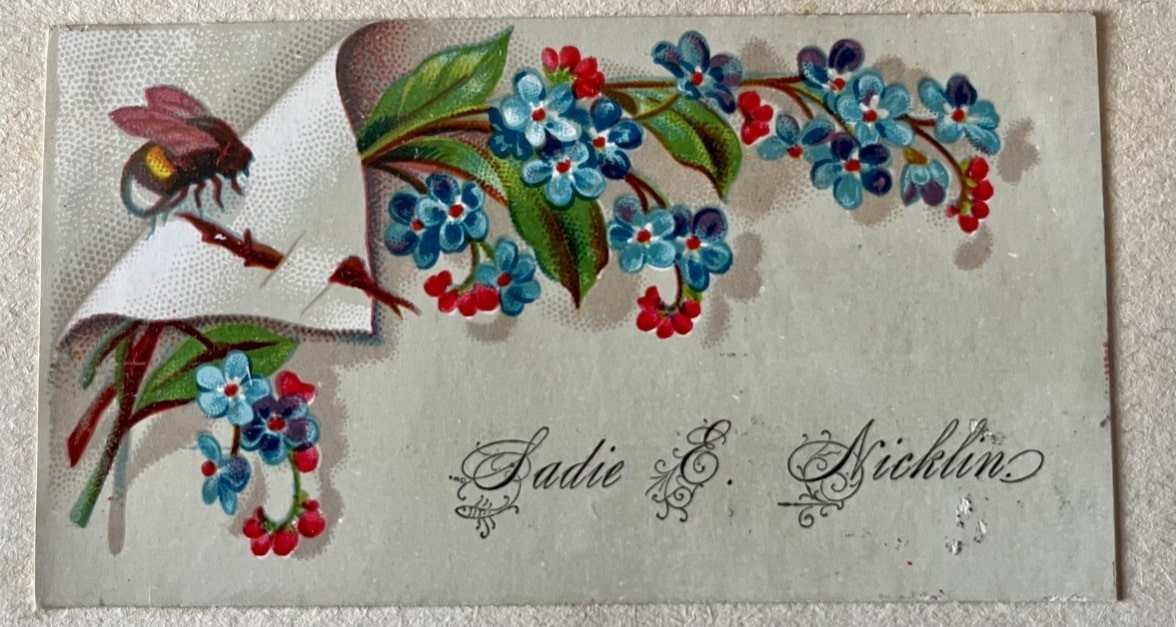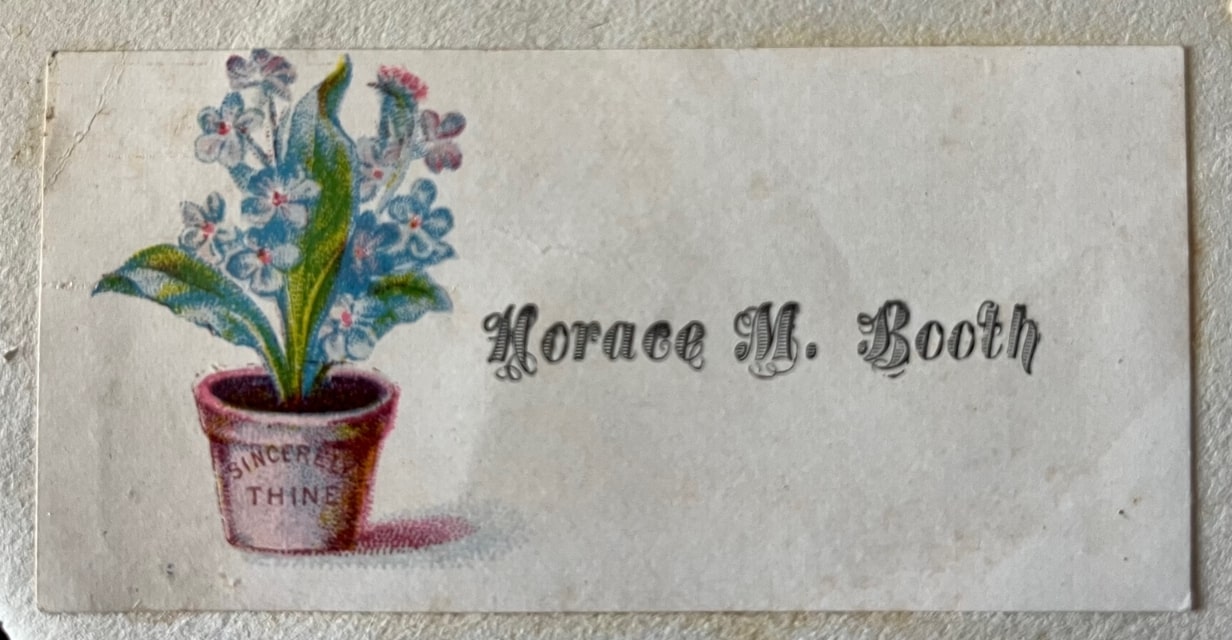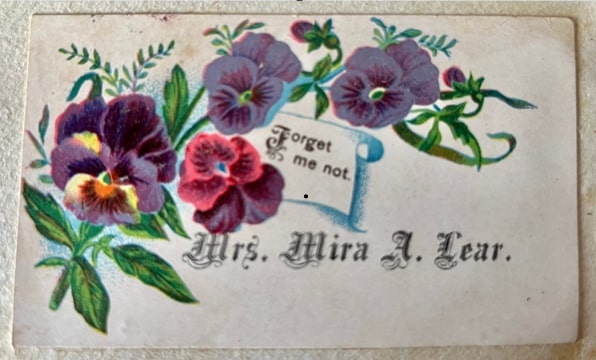Introduction: In this article, Gena Philibert-Ortega explores the history and etiquette of our ancestors’ use of calling cards. Gena is a genealogist and author of the book “From the Family Kitchen.”
Do you use a business card? Business cards provide contact information to the receiver. Although business cards are used as a “work tool” they can be used outside of the workplace to provide contact information. For example, genealogists might hand out a “business card” that includes their family history surnames or website at a conference.

Our ancestors used a version of the business card. In the 18th and 19th centuries it was customary for those in the upper socio-economic classes to present a calling card, or visiting card, when they visited friends and acquaintances. This European tradition was adopted in the United States and became more commonplace as printing technology improved. (1) With the use of calling cards also came the rules that governed them. These rules dictated everything from the way they should look to when they should be used and how. Historical newspapers provide a peak into this bit of calling card history.
Calling Card Etiquette in the Newspaper
One way to learn more about a historical custom is to search newspapers, such as GenealogyBank’s Historical Newspaper Archives. Calling card etiquette was the subject of many newspaper articles. As their use spread, newspaper articles helped readers better understand what the proper etiquette was. Keep in mind that you’ll want to pay attention to the year the article was printed since etiquette for a year or decade can differ from an earlier or later time period. Also, not everyone follows etiquette so these were guidelines that may have been ignored by some.

Calling card etiquette articles help us better understand the item and its use. For example, this 1880 newspaper article lists calling card “dos” including how one turns down the corner of the card if wanting to visit more than one lady living at the home. Initials after names can perplex researchers so I found this explanation of the initials “P.P.C.” fascinating. P.P.C., short for “Presents Parting Compliments,” indicates the sender is leaving the city for a permanent residence abroad.
This 1902 calling card etiquette column focuses on visits made by married women. It begins by explaining that a formal call made by a married woman requires three cards, one given to a servant at the door and two of her husband’s left on a hall table (one for the hostess and one for her husband). The article explains: “This custom is generally understood, as married men do not make visits, but leave these social duties to their wives.”
A 1911 article on calling card etiquette focuses on the actual card itself. The article states that the card should be simple white cardboard. It later states that the size of the card varies with “changing fashion” but a married woman’s card would be larger than that of a single woman.
This article also explains how a married woman’s name should appear on the card. Her married name should appear as: “Mrs. John P. Jones or Mrs. John Parker Jones, not Mrs. J. Parker Jones, and never Mrs. Mary Allen Jones.” It goes on to say that even if she is a widow, it is preferable that she should “preserve her husband’s name on her calling cards.”
A 1912 advice column clarifies that a married woman’s calling card always displays her husband’s full name, whether he is living or deceased. A married woman’s “own name” printed on a card would indicate that she was a divorcee.
As printing technology and fashion evolved, calling cards went from plain white cards to highly decorated ones, reflecting the preference of the owner. The use of calling cards changed and were printed as one would have wedding announcements or Christmas cards printed. Evolving from an item used by the rich to announce a visit and reflect social status to something that could be used by almost anyone as a way to provide their name in person or via the mail.
The End of the Calling Card
While I found newspaper articles about calling card etiquette well into the 1940s, the use of the calling card had evolved and changed. By the 1940s use of the phrase “calling card” could also indicate anything that showed a person had been present or a characteristic of a person. Today a “calling card” has three definitions in an online dictionary, one of which refers to a card used to make telephone calls. (2)
The demise of that tradition most likely has a few origins including the advent of the telephone and the evolution of a personal calling card into a business cared. Today you may find a calling card at an antique store, a museum, or maybe passed down in the family. The calling card history is helpful as we consider how our ancestors conducted visits in an earlier time.
Explore over 330 years of newspapers and historical records in GenealogyBank. Discover your family story! Start a 7-Day Free Trial
Note on the header image: calling card for Mrs. Mira A. Lear. Credit: from the collection of Gena Philibert-Ortega.
____________________
(1) “Visiting Card,” Wikipedia (https://en.wikipedia.org/wiki/Visiting_card: accessed 25 July 2023).
(2) “Calling Card,” Merriam-Webster (https://www.merriam-webster.com/dictionary/calling%20card: accessed 25 July 2023).
